Home » Application » Application in Energy Storage
Application in Energy Storage
With the development of science and technology, energy storage is one of the most effective ways to solve the problem of wind power grid connection. At present, there are many kinds of energy storage technologies in wind power system, and their functions and functions are quite different. The selection of energy storage forms should be based on the different requirements of wind farms and the benefits of energy storage system for wind power system. The application of energy storage technology in wind power generation system greatly improves the utilization rate of power resources and meets people's demand for power resources to the greatest extent.
Research Status of Energy Storage Technology
Electric energy storage can be divided into four types: mechanical energy storage (such as pumped storage, compressed air energy storage, flywheel energy storage), chemical energy storage (such as sodium-sulfur battery, liquid flow battery, lead-acid battery, nickel-cadmium battery, supercapacitor, etc.), electromagnetic energy storage (such as superconducting electromagnetic energy storage) and phase change energy storage (such as ice storage).
For a long time, the research of energy storage technology in power system has focused on large-scale energy storage technology to solve the problem of peak shaving. Recently, small and medium-sized energy storage technologies such as energy storage batteries, supercapacitors, superconducting electromagnetic energy storage and high efficiency flywheels have made considerable progress, which has greatly expanded the application scope of energy storage technology. With these energy storage technologies of different scales, their application can run through all aspects of power system transmission, transformation and distribution, in order to comprehensively improve the operation efficiency, reliability, power quality and asset value of power system.
Traditional electricity networks are supplied by large, centralised and highly predictable generating stations. An inherent characteristic of such networks is that supply must meet demand at all times. Typically, matching supply with demand on a network requires backup sources of power, such as an open-cycle gas turbine, or by a storage system. Wind energy is inherently intermittent, variable and non-dispatchable (cannot be switched on 'on demand'). Consequently, the need for such backup sources of power increases as the proportion of wind generation on the system increases. To reduce fuel demands, it is desirable that the backup source is a storage facility rather than further primary generation.
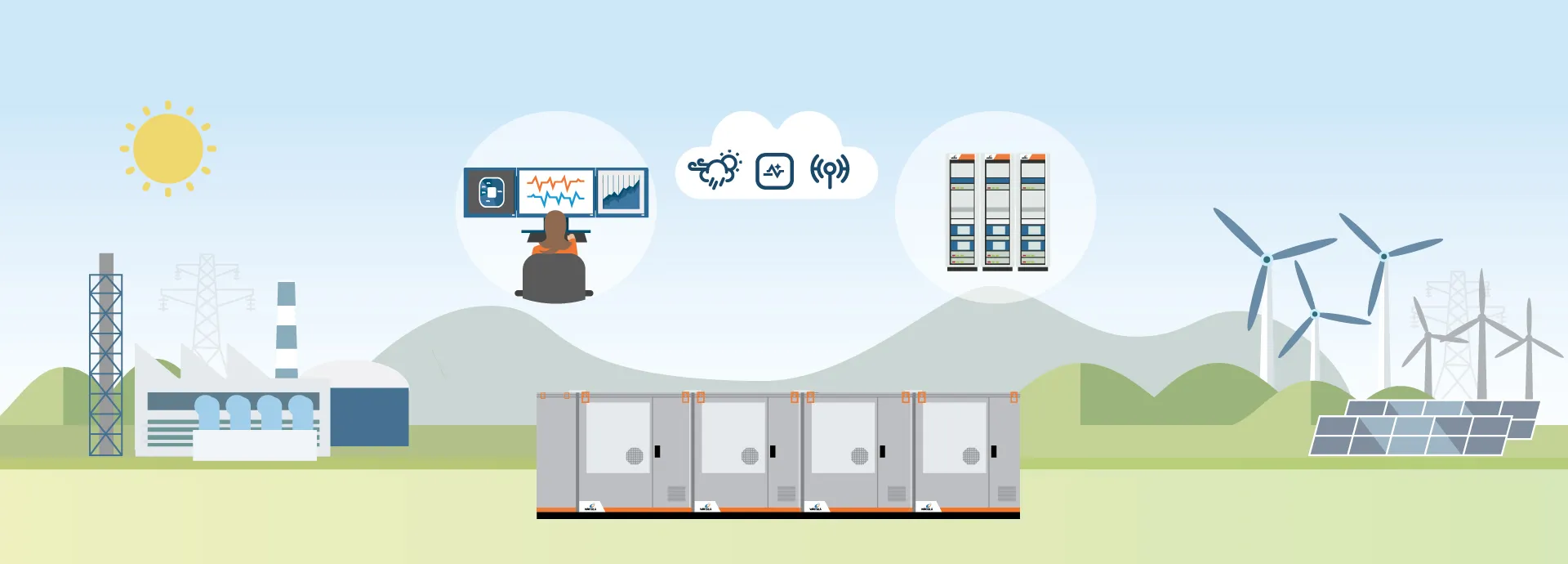
Application of Energy Storage Technology in Wind Power Generation System
In order to further enhance the stability of wind power generation system, the use of wind energy storage technology is becoming more and more important, so it is necessary to access energy storage equipment in wind power generation system. Of course, when accessing energy storage equipment, it is generally necessary to select energy storage devices according to the actual requirements and characteristics of wind energy, so that the wind energy storage equipment can meet the corresponding needs. At the same time, the wind energy storage system can also store the surplus energy, and compensate for the use when the power is insufficient in the wind power generation system, thereby improving the stability of the wind power generation system. However, the way of wind energy storage technology is very different in structure form. Therefore, according to the different structure of energy storage technology, energy storage technology can be divided into distributed and centralized.
Distributed Energy Storage
In the application environment of distributed energy storage technology, because wind turbines contain DC links, we can connect capacitors to DC buses. When wind speed drops and wind power cannot meet the needs of power generation, we can use energy storage equipment to transmit power to DC side, and then transmit power to power grid system through converter, so that the operation of the whole power grid is more stable and reliable. The constant holding power can realize smooth power supply. When the wind speed rises, we can transfer the surplus power to the DC side, which is absorbed by the energy storage equipment system, so as to achieve a stable output of power and make full use of the power energy. These are the principles of distributed energy storage technology.
Pumped Storage
Pumped storage power station in wind farm uses wind energy to generate electricity. Pumped storage power is directly driven by pumps without batteries, and then stable power generation and supply is achieved by using stored water potential energy. The following picture is shown in the wind power system diagram of pumped storage energy in a certain area of Ningxia, China.
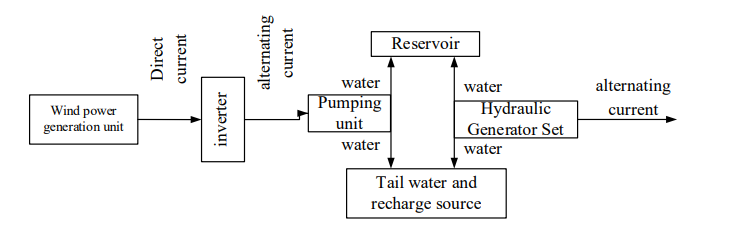
Pumped storage is a mature way of energy storage. Small-scale hydroelectric power generation system has little investment. In conditional areas, it is a preferred scheme to configure pumped storage system for wind farms. Utilizing the various functions and flexibility of pumped storage power stations to compensate for the randomness and non-uniformity of wind power generation can not only break the limitation of wind capacity on the scale of power grid, but also provide more peak-load and valley-load capacity, frequency modulation, phase modulation, emergency reserve means for power grid, and improve its operation conditions. For example, in order to exploit and utilize the wind energy resources of El Hierro and Canary Islands, Spain has built corresponding pumped storage power stations to operate jointly with them, and in developed countries such as Germany, Denmark and the United States, there are many examples of such projects. For areas with abundant wind power resources, whether they are sent out or digested in situ, the complementary operation of pumped storage power generation and wind power generation should be a development trend.
Development Direction and Prospect
First, large-scale energy storage can be used for peak-shaving and valley filling of global energy internet. Large-scale and long-term energy storage facilities such as pumped storage and compressed air storage can be used for peak shaving of large power grids. The liquid flow battery has large energy storage, many cycles and long life, which can be used as a supplement to the peak shaving energy storage device of power grid. Hydrogen energy storage can be used to store surplus wind and solar energy to power fuel cell vehicles.
Secondly, large-scale power energy storage can be used to suppress the fluctuation of large-scale clean energy. Supercapacitors, superconducting electromagnetic energy storage, flywheel energy storage, sodium sulfur batteries and other power-type energy storage equipment mainly operate in conjunction with large-scale renewable energy, which can quickly respond to the output of wind power and photovoltaic power generation, suppress the fluctuation of renewable energy and ensure the real-time operation safety of power grid.
Lastly, small energy storage batteries can be used in electric vehicles. Lithium batteries, new lead-acid batteries, metal air batteries and other energy storage equipment have high energy and power density, but the battery identity is poor, it is difficult to form large capacity battery packs, not suitable for large power plants, mainly for electric vehicles. With the prolongation of battery life and the reduction of cost, energy storage battery can meet the needs of large-scale development of electric vehicles.
In the future, the energy storage battery of electric vehicles will be connected to the global energy internet, and the charging time will be arranged reasonably to assist the peak shaving of the power grid, so as to realize the low valley charging and peak discharge. The key to the progress of energy storage technology lies in the breakthrough of material technology. With the continuous innovation and development of new energy storage materials, important breakthroughs are expected to be made in extending the service life of energy storage components, improving energy density, shortening charging time and reducing costs.
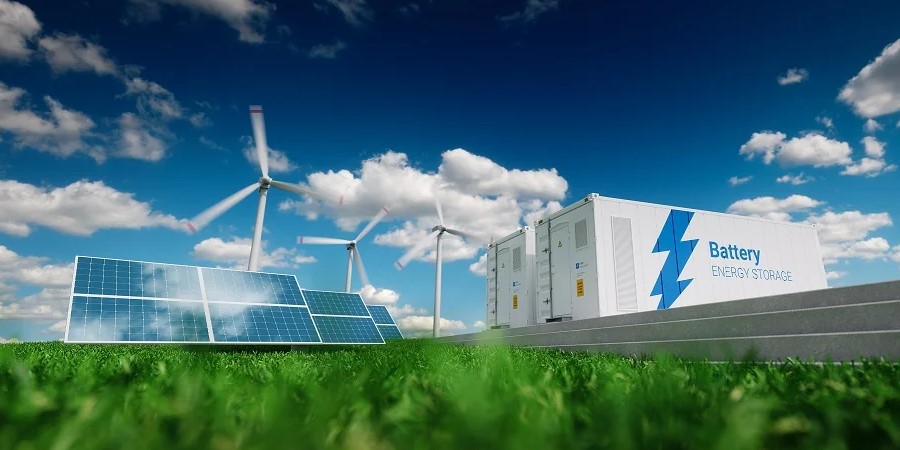
In summary, in recent years, wind power has developed rapidly all over the world. The main disadvantage of wind power generation is that its output power varies with the change of meteorological conditions, and for intermittent, in order to ensure continuous power supply to load, it is necessary to install energy storage system. The application of energy storage technology in wind power generation system mainly stores the converted electric energy through its own energy storage mode. Energy storage technology can also ensure that enough electricity is stored in the power system to provide sustained and stable power support for people.
Research Status of Energy Storage Technology
Electric energy storage can be divided into four types: mechanical energy storage (such as pumped storage, compressed air energy storage, flywheel energy storage), chemical energy storage (such as sodium-sulfur battery, liquid flow battery, lead-acid battery, nickel-cadmium battery, supercapacitor, etc.), electromagnetic energy storage (such as superconducting electromagnetic energy storage) and phase change energy storage (such as ice storage).
For a long time, the research of energy storage technology in power system has focused on large-scale energy storage technology to solve the problem of peak shaving. Recently, small and medium-sized energy storage technologies such as energy storage batteries, supercapacitors, superconducting electromagnetic energy storage and high efficiency flywheels have made considerable progress, which has greatly expanded the application scope of energy storage technology. With these energy storage technologies of different scales, their application can run through all aspects of power system transmission, transformation and distribution, in order to comprehensively improve the operation efficiency, reliability, power quality and asset value of power system.
Traditional electricity networks are supplied by large, centralised and highly predictable generating stations. An inherent characteristic of such networks is that supply must meet demand at all times. Typically, matching supply with demand on a network requires backup sources of power, such as an open-cycle gas turbine, or by a storage system. Wind energy is inherently intermittent, variable and non-dispatchable (cannot be switched on 'on demand'). Consequently, the need for such backup sources of power increases as the proportion of wind generation on the system increases. To reduce fuel demands, it is desirable that the backup source is a storage facility rather than further primary generation.

Application of Energy Storage Technology in Wind Power Generation System
In order to further enhance the stability of wind power generation system, the use of wind energy storage technology is becoming more and more important, so it is necessary to access energy storage equipment in wind power generation system. Of course, when accessing energy storage equipment, it is generally necessary to select energy storage devices according to the actual requirements and characteristics of wind energy, so that the wind energy storage equipment can meet the corresponding needs. At the same time, the wind energy storage system can also store the surplus energy, and compensate for the use when the power is insufficient in the wind power generation system, thereby improving the stability of the wind power generation system. However, the way of wind energy storage technology is very different in structure form. Therefore, according to the different structure of energy storage technology, energy storage technology can be divided into distributed and centralized.
Distributed Energy Storage
In the application environment of distributed energy storage technology, because wind turbines contain DC links, we can connect capacitors to DC buses. When wind speed drops and wind power cannot meet the needs of power generation, we can use energy storage equipment to transmit power to DC side, and then transmit power to power grid system through converter, so that the operation of the whole power grid is more stable and reliable. The constant holding power can realize smooth power supply. When the wind speed rises, we can transfer the surplus power to the DC side, which is absorbed by the energy storage equipment system, so as to achieve a stable output of power and make full use of the power energy. These are the principles of distributed energy storage technology.
Pumped Storage
Pumped storage power station in wind farm uses wind energy to generate electricity. Pumped storage power is directly driven by pumps without batteries, and then stable power generation and supply is achieved by using stored water potential energy. The following picture is shown in the wind power system diagram of pumped storage energy in a certain area of Ningxia, China.

Pumped storage is a mature way of energy storage. Small-scale hydroelectric power generation system has little investment. In conditional areas, it is a preferred scheme to configure pumped storage system for wind farms. Utilizing the various functions and flexibility of pumped storage power stations to compensate for the randomness and non-uniformity of wind power generation can not only break the limitation of wind capacity on the scale of power grid, but also provide more peak-load and valley-load capacity, frequency modulation, phase modulation, emergency reserve means for power grid, and improve its operation conditions. For example, in order to exploit and utilize the wind energy resources of El Hierro and Canary Islands, Spain has built corresponding pumped storage power stations to operate jointly with them, and in developed countries such as Germany, Denmark and the United States, there are many examples of such projects. For areas with abundant wind power resources, whether they are sent out or digested in situ, the complementary operation of pumped storage power generation and wind power generation should be a development trend.
Development Direction and Prospect
First, large-scale energy storage can be used for peak-shaving and valley filling of global energy internet. Large-scale and long-term energy storage facilities such as pumped storage and compressed air storage can be used for peak shaving of large power grids. The liquid flow battery has large energy storage, many cycles and long life, which can be used as a supplement to the peak shaving energy storage device of power grid. Hydrogen energy storage can be used to store surplus wind and solar energy to power fuel cell vehicles.
Secondly, large-scale power energy storage can be used to suppress the fluctuation of large-scale clean energy. Supercapacitors, superconducting electromagnetic energy storage, flywheel energy storage, sodium sulfur batteries and other power-type energy storage equipment mainly operate in conjunction with large-scale renewable energy, which can quickly respond to the output of wind power and photovoltaic power generation, suppress the fluctuation of renewable energy and ensure the real-time operation safety of power grid.
Lastly, small energy storage batteries can be used in electric vehicles. Lithium batteries, new lead-acid batteries, metal air batteries and other energy storage equipment have high energy and power density, but the battery identity is poor, it is difficult to form large capacity battery packs, not suitable for large power plants, mainly for electric vehicles. With the prolongation of battery life and the reduction of cost, energy storage battery can meet the needs of large-scale development of electric vehicles.
In the future, the energy storage battery of electric vehicles will be connected to the global energy internet, and the charging time will be arranged reasonably to assist the peak shaving of the power grid, so as to realize the low valley charging and peak discharge. The key to the progress of energy storage technology lies in the breakthrough of material technology. With the continuous innovation and development of new energy storage materials, important breakthroughs are expected to be made in extending the service life of energy storage components, improving energy density, shortening charging time and reducing costs.

In summary, in recent years, wind power has developed rapidly all over the world. The main disadvantage of wind power generation is that its output power varies with the change of meteorological conditions, and for intermittent, in order to ensure continuous power supply to load, it is necessary to install energy storage system. The application of energy storage technology in wind power generation system mainly stores the converted electric energy through its own energy storage mode. Energy storage technology can also ensure that enough electricity is stored in the power system to provide sustained and stable power support for people.
Post a Comment:
You may also like:

Featured Articles
Applications for Small Wind Turbines
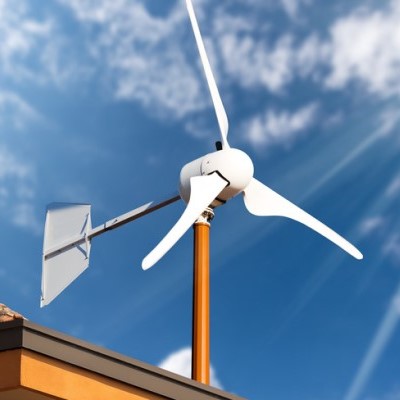 Small-scale wind energy is a small but rapidly growing segment of the RE industry in the US. Like other renewable sources, in its ...
Small-scale wind energy is a small but rapidly growing segment of the RE industry in the US. Like other renewable sources, in its ...
 Small-scale wind energy is a small but rapidly growing segment of the RE industry in the US. Like other renewable sources, in its ...
Small-scale wind energy is a small but rapidly growing segment of the RE industry in the US. Like other renewable sources, in its ...Wind Turbine for Onshore Application
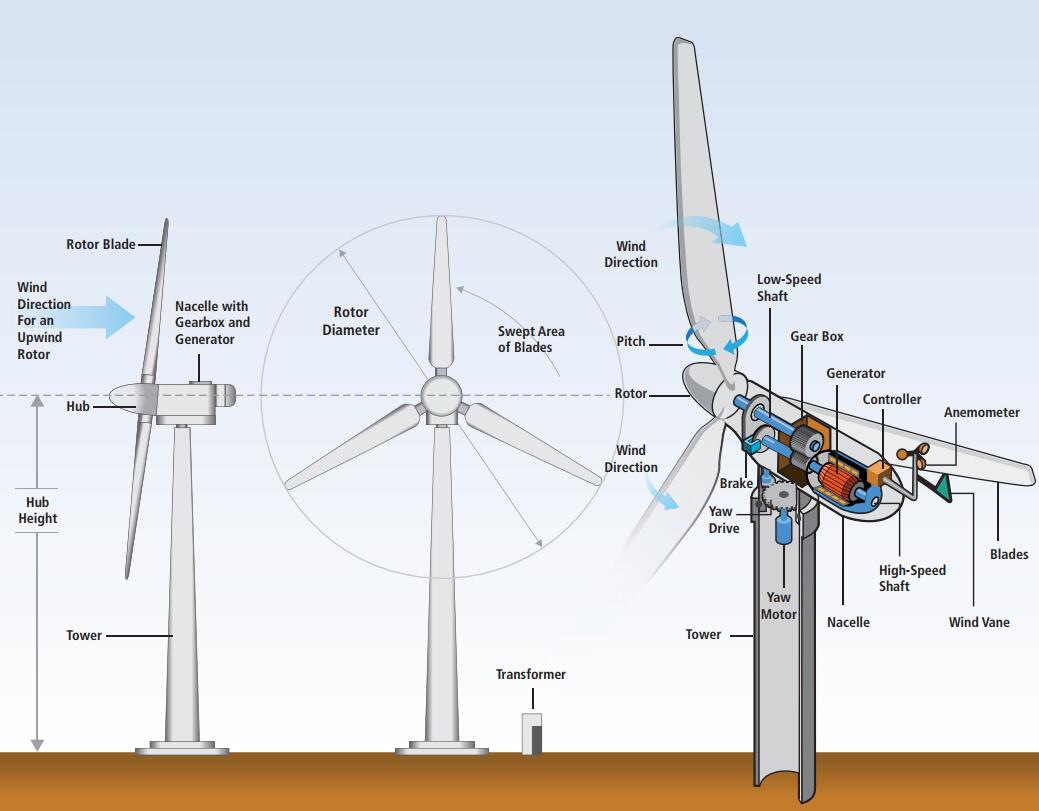 Modern, commercial grid-connected wind turbines have evolved from small, simple machines to large,highly ...
Modern, commercial grid-connected wind turbines have evolved from small, simple machines to large,highly ...
 Modern, commercial grid-connected wind turbines have evolved from small, simple machines to large,highly ...
Modern, commercial grid-connected wind turbines have evolved from small, simple machines to large,highly ...Application in Severe Climates
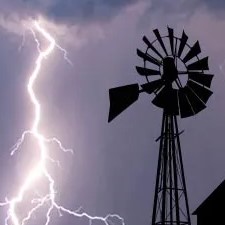 Operation in severe climates imposes special design considerations on wind turbines. Severe climates may include those with ...
Operation in severe climates imposes special design considerations on wind turbines. Severe climates may include those with ...
 Operation in severe climates imposes special design considerations on wind turbines. Severe climates may include those with ...
Operation in severe climates imposes special design considerations on wind turbines. Severe climates may include those with ...History of Wind Energy Applications
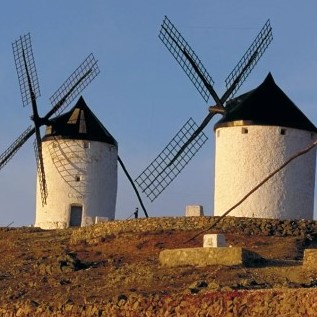 Wind is used to produce electricity by converting the kinetic energy of air in motion into electricity. In modern wind ...
Wind is used to produce electricity by converting the kinetic energy of air in motion into electricity. In modern wind ...
 Wind is used to produce electricity by converting the kinetic energy of air in motion into electricity. In modern wind ...
Wind is used to produce electricity by converting the kinetic energy of air in motion into electricity. In modern wind ...Application in Energy Storage
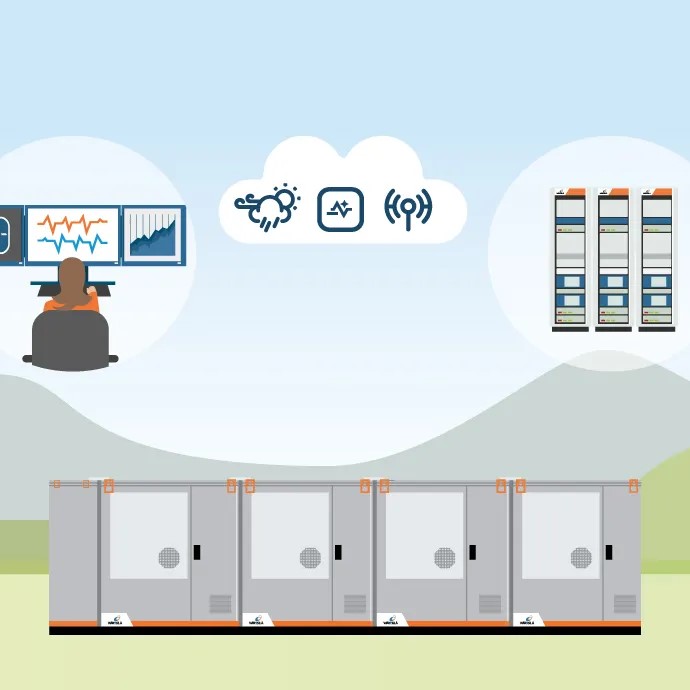 With the development of science and technology, energy storage is one of the most effective ways to solve the problem of ...
With the development of science and technology, energy storage is one of the most effective ways to solve the problem of ...
 With the development of science and technology, energy storage is one of the most effective ways to solve the problem of ...
With the development of science and technology, energy storage is one of the most effective ways to solve the problem of ...